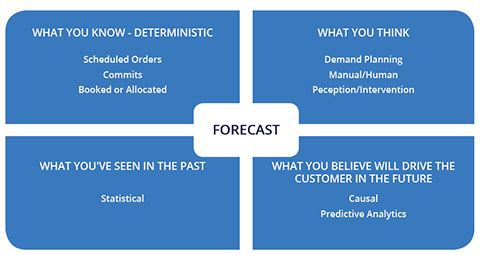Forecasting 101

Tracy Coon
Supply Chain Education Consultant
What is a Forecast?
A forecast is everything you’ve known, thought, or seen in the past, plus everything you believe will drive demand in the future.
Knowing when to get involved is key!
Understanding the Role of the Trending Signal.
The trending signal is a percentage that describes the rate of momentum an item’s demand is moving away from the forecast. In ‘standard’ forecasting, the item’s trending signal determines the reliability of what happened last period verses what the forecast expected would happen. This is key to how much of last period’s demand is considered in the new forecast.
- A high trending signal percentage equates to more of last period’s demand influencing this period’s forecast.
- A lower trending signal percentage equates to less of last period’s demand influencing this period’s forecast.
When to review a forecast?
Demand exception management is the most common time for forecast review. When a demand exception occurs, Supply Chain Planning is telling you that the item did something drastically different than the forecast expected. An exception could also occur when an item is due much earlier than the order cycle. This could be new or increased demand that may not have been communicated ahead of time.
When to change a forecast?
We recommend changing the forecast when you know something that the system does not – for example: gain/loss of a customer or addition/deletion of stores.
Something else to consider…
When making a forecast change, do you expect the demand change to occur immediately? Consider freezing the forecast. This will allow the forecast not to be revised until you have received the new item. Allowing the item to experience demand through a full period before revising can also be beneficial.
Will the forecast be correct?
At the end of the day, the forecast is a prediction based on input from customers, sales, marketing, etc. Provide the system as much information as possible, and only revise when necessary. Using your Supply Chain Analytics reports will help to identify items where forecast opportunities exist.
We will host a “Tips & Trips with Supply Chain Planning” session during BLUEPrint 2017 where we will look at some of the features in SCP and how to use them to your advantage. BLUEPrint will be held at the Omni Hotel in Atlanta – April 30- May 2. As always, if you have additional questions before then, you can reach out to us directly.



Comments are closed.